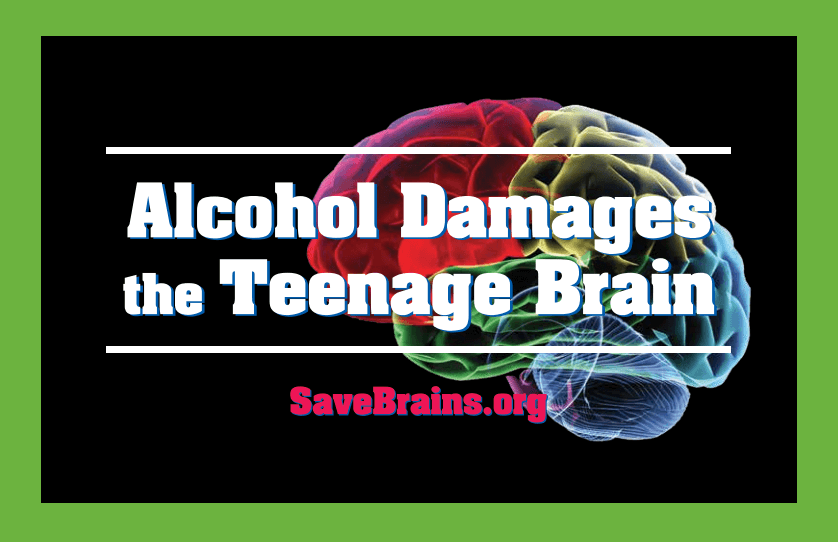Sources
Save Brains Website References
American Association for the Advancement of Science. (2016). Alcohol and your brain. Retrieved January 27, 2016, from http://sciencenetlinks.com/student-teacher-sheets/alcohol-and-your-brain/
The BrainWaves Center. (2013). Your brain and what it does. Retrieved February 5, 2016, from http://brainwaves.com/
Court, J. M. (2013). Immature brain in adolescence. Journal of Paediatrics and Child Health, 49(11), 883-886. doi:10.1111/jpc.12241
Crews, F. T., Sarkar, D. K., Qin, L., Zou, J., Boyadjieva, N., & Vetreno, R. P. (2015). Neuroimmune function and the consequences of alcohol exposure. Alcohol Research: Current Reviews, 37(2), 331-351.
Dalal, P. K., & Kar, S. K. (2014). Impact of alcohol on the developing brain. International Journal of Nutrition, Pharmacology, Neurological Diseases, 4(5), 1-5. doi:10.4103/2231-0738.147454S1
Fitzpatrick, L. E., & Crowe, S. F. (2013). Cognitive and emotional deficits in chronic alcoholics: A role for the cerebellum? Cerebellum, 12(4), 520-533. doi:10.1007/s12311-013-0461-3
Lisdahl, K. M., Gilbart, E. R., Wright, N. E., & Shollenbarger, S. (2013). Dare to delay? The impacts of adolescent alcohol and marijuana use onset on cognition, brain structure, and function. Frontiers in Psychiatry, 4(53), 1-19. doi:10.3389/fpsyt.2013.00053
Little, K., Hawkins, M. T., Sanson, A., Toumbourou, J. W., Smart, D., Vassallo, S., & O’Connor, M. (2012). The longitudinal prediction of alcohol consumption-related harms among young adults. Substance Use & Misuse, 47(12), 1303-1317. doi:10.3109/10826084.2012.699577
Luciana, M., Collins, P. F., Muetzel, R. L., & Lim, K. O. (2013). Effects of alcohol use initiation on brain structure in typically developing adolescents. The American Journal of Drug and Alcohol Abuse: Encompassing All Addictive Disorders, 39(6), 345-355. doi:10.3109/00952990.2013.837057
Lyvers, M., Duff, H., & Hasking, P. (2011). Risky alcohol use and age at onset of regular alcohol consumption in relation to frontal lobe indices, reward sensitivity, and rash impulsiveness. Addiction Research & Theory, 19(3), 251-259. doi:10.3109/16066359.2010.500751
Malone, S., Luciana, M., Wilson, S., Sparks, J., Hunt, R. H., Thomas, K. M., & Iacono, W. G. (2014). Adolescent drinking and motivated decision-making: A cotwin-control investigation with monozygotic twins. Behavior Genetics, 44(4), 407-418. doi:10.1007/s10519-014-9651-0
Moulton, E. A., Elman, I., Becerra, L. R., Goldstein, R. Z., & Borsook, D. (2014). The cerebellum and addiction: Insights gained from neuroimaging research. Addiction Biology, 19(3), 317-331. doi:10.1111/adb.12101
Mukherjee, S. (2013). Alcoholism and its effects on the central nervous system. Current Neurovascular Research, 10(3), 256-262.
National Geographic. (2016). Brain. Retrieved February 5, 2016, from http://science.nationalgeographic.com/science/health-and-human-body/human-body/brain-article/
National Institute on Alcohol Abuse and Alcoholism [NIAAA]. (1996). Alcohol and stress. Alcohol Alert, 32. Retrieved from http://pubs.niaaa.nih.gov/publications/aa32.htm
Norton, M. [centerpointgvl]. (2013). Alcohol and the adolescent brain [Video file]. Retrieved January 27, 2016, from https://www.youtube.com/watch?v=MAcQx451dY8&feature=youtu.be
Oscar-Berman, M., & Marinkovic, K. (2003). Alcoholism and the brain: An overview. Alcohol Research & Health, 27(2), 125-133.
Pavlović, M., & Đinđić, B. (2014). Alcohol consumption habits and sleep quality. Acta Medica Medianae, 53(2), 10-15. doi:10.5633/amm.2014.0202
Silveri, M. M. (2012). Adolescent brain development and underage drinking in the united states: Identifying risks of alcohol use in college populations. Harvard Review of Psychiatry, 20(4), 189-200. doi:10.3109/10673229.2012.714642
Simms, J. A., Nielsen, C. K., Li, R., & Bartlett, S. E. (2014). Intermittent access ethanol consumption dysregulates crf function in the hypothalamus and is attenuated by the crf- r1 antagonist, cp-376395. Addiction Biology, 19(4), 606-611. doi:10.1111/adb.12024
Substance Abuse and Mental Health Services Administration [SAMHSA]. (2014). Alcohol and the developing brain. Retrieved January 27, 2016, from http://www.toosmarttostart.samhsa.gov/families/facts/brain.aspx
Save Brains Brochure References
CASAColumbia. (2011). National study reveals: Teen substance use america’s #1 public health problem. Retrieved from http://www.casacolumbia.org/newsroom/press-releases/national-study-reveals-teen-substance-use-americas-1-public-health-problem
Centers for Disease Control and Prevention. (2015). Fact sheets – underage drinking. Retrieved from http://www.cdc.gov/alcohol/fact-sheets/underage-drinking.htm
Journal of Studies on Alcohol and Drugs. (2011). Adult-supervised drinking in young teens may lead to more alcohol use, consequences. ScienceDaily. Retrieved from http://www.sciencedaily.com/releases/2011/04/110428065615.htm
Kaynak, O., Winters, K. C., Cacciola, J., Kirby, K. C., & Arria, A. M. (2014). Providing alcohol for underage youth: What messages should we be sending parents? Journal of Studies on Alcohol and Drugs, 75(4), 590-605.
Medical Care Development, Inc. (2009). Underage drinking: Myth vs. reality [PDF document]. Retrieved from http://www.21r.dreamhosters.com/blog/wp-content/uploads/2009/09/Myth-vs-Reality4.pdf
Pacific Institute for Research and Evaluation [PIRE]. (n.d.). Retrieved November 2009, from http://www.pire.org/
U.S. Department of Justice, Office of Justice Programs, Office of Juvenile Justice and Delinquency Prevention [OJJDP]. (2012). Effects and consequences of underage drinking. Juvenile Justice Bulletin. Retrieved from http://www.ojjdp.gov/pubs/237145.pdf

